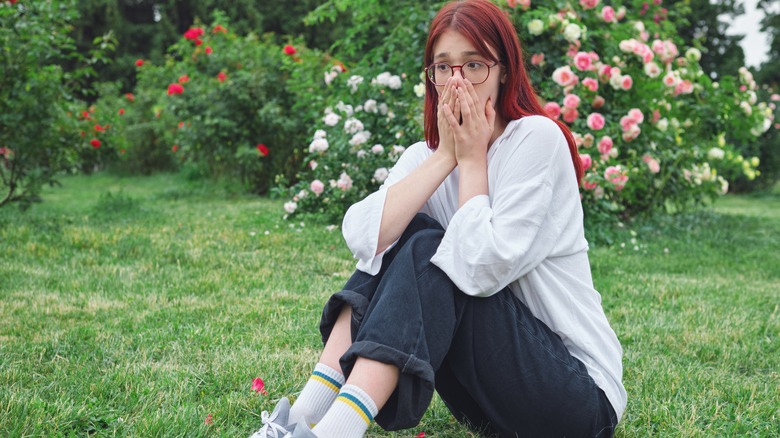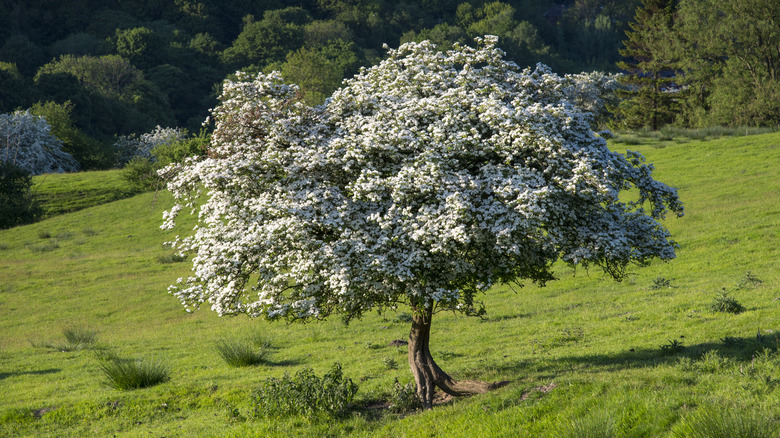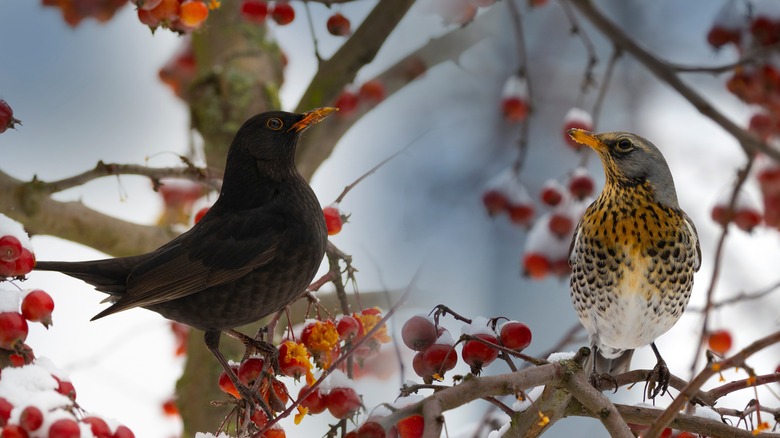This Flowering Tree Is Gorgeous, But It Has An Odor Like A Rotting Corpse
Sometimes, nature has a funny way of keeping you on your toes. Just when you think you've found the landscaping idea to liven up your yard, you might be in for a surprise. Take the hawthorn tree, for example. This small, flowering tree from the rose family (Rosaceae) is stunning with its clusters of white or pink flowers in full bloom — but get too close, and you might catch a whiff of something sickly sweet that smells like it's been rotting for days.
So, why does something so beautiful smell so bad? It's actually part of the tree's survival strategy. The nasty smell comes from a compound called trimethylamine, which is one of the first things to form as animal tissue starts breaking down. This odor attracts good insects, like bees and butterflies. By putting out this unpleasant scent, the hawthorn tree ensures that these insects come around and help with pollination. As they move from flower to flower collecting nectar, they transfer pollen, which helps the tree reproduce and produce fruit. While the smell might be off-putting to human noses, it's crucial for the tree's survival.
The hawthorn's place in history and mythology
The hawthorn tree is interesting beyond its beauty and unusual stench — it also has a rich history. In Celtic mythology, the hawthorn was considered a sacred tree and was thought to be a gateway to the Otherworld where fairies lived. Because of this, people were superstitious about cutting them down or even bringing their branches inside, believing it would upset the balance between our world and the fairy realm, possibly making the fairy folk unhappy. Hawthorn was also a big part of May Day celebrations because it's tied to springtime. People loved ornamenting hawthorn branches or making floral garlands to decorate their homes.
However, the hawthorn's story isn't all about beauty and celebration. In medieval England, the strong smell of hawthorns led to their association with the plague, as it reminded people of the mass deaths during that time. This historical connection has only reinforced the hawthorn's reputation as a tree with a dual nature — beautiful yet unsettling.
Why you might still want a hawthorn in your garden
Despite its smell and history, the hawthorn tree has a lot to offer. In spring, it grabs attention with its stunning clusters of blossoms that range from pure white to soft pink, creating a beautiful contrast against its dark green leaves. As the flowers fade, they're replaced by yellow foliage and bright red berries, known as haws, which stay on the tree through winter. These berries not only add bursts of color to your winter lawn but also provide a valuable food source for birds and other wildlife. With something to offer every season, it's a great pick for gardeners looking for year-round interest.
However, keep in mind that common or English hawthorn can become invasive as it produces tons of seeds that birds love to spread around, which can lead to thick patches that crowd out other plants. It grows fast and can handle pretty much any condition, so once it takes hold, it's tough to manage. To keep it in check in your garden, make sure to prune it regularly to stop it from seeding too much and pull out any seedlings you spot. Mulching around the base can help stop new growth. If things get out of hand, you might need to use some herbicides — just be sure to follow local guidelines and package instructions to keep everything safe.


